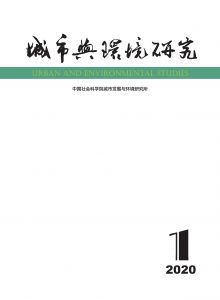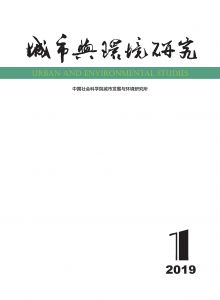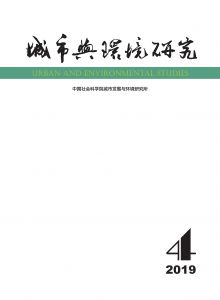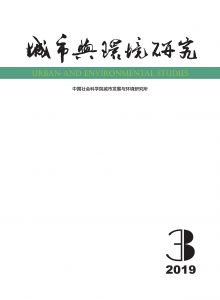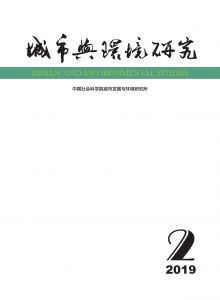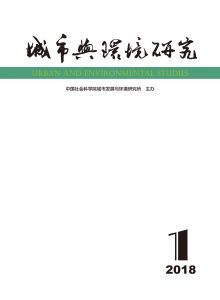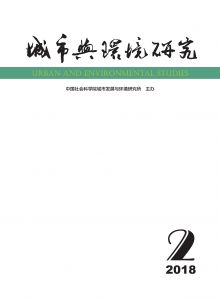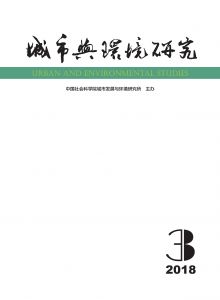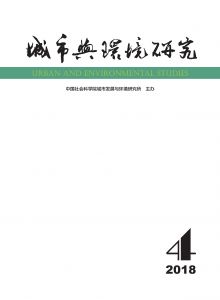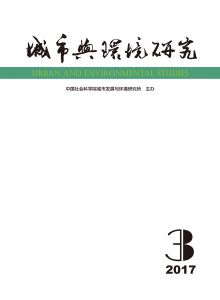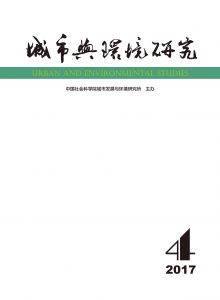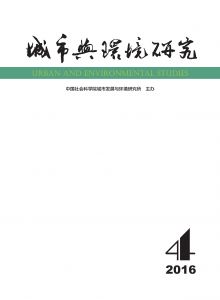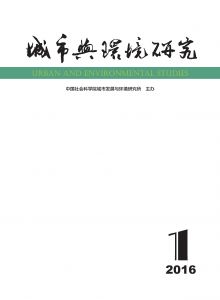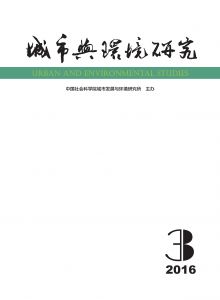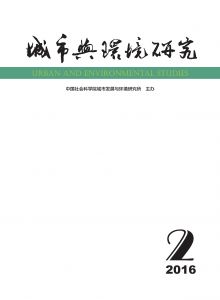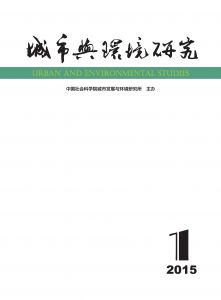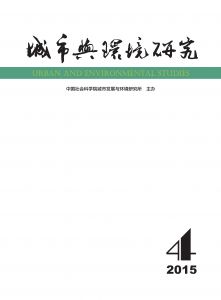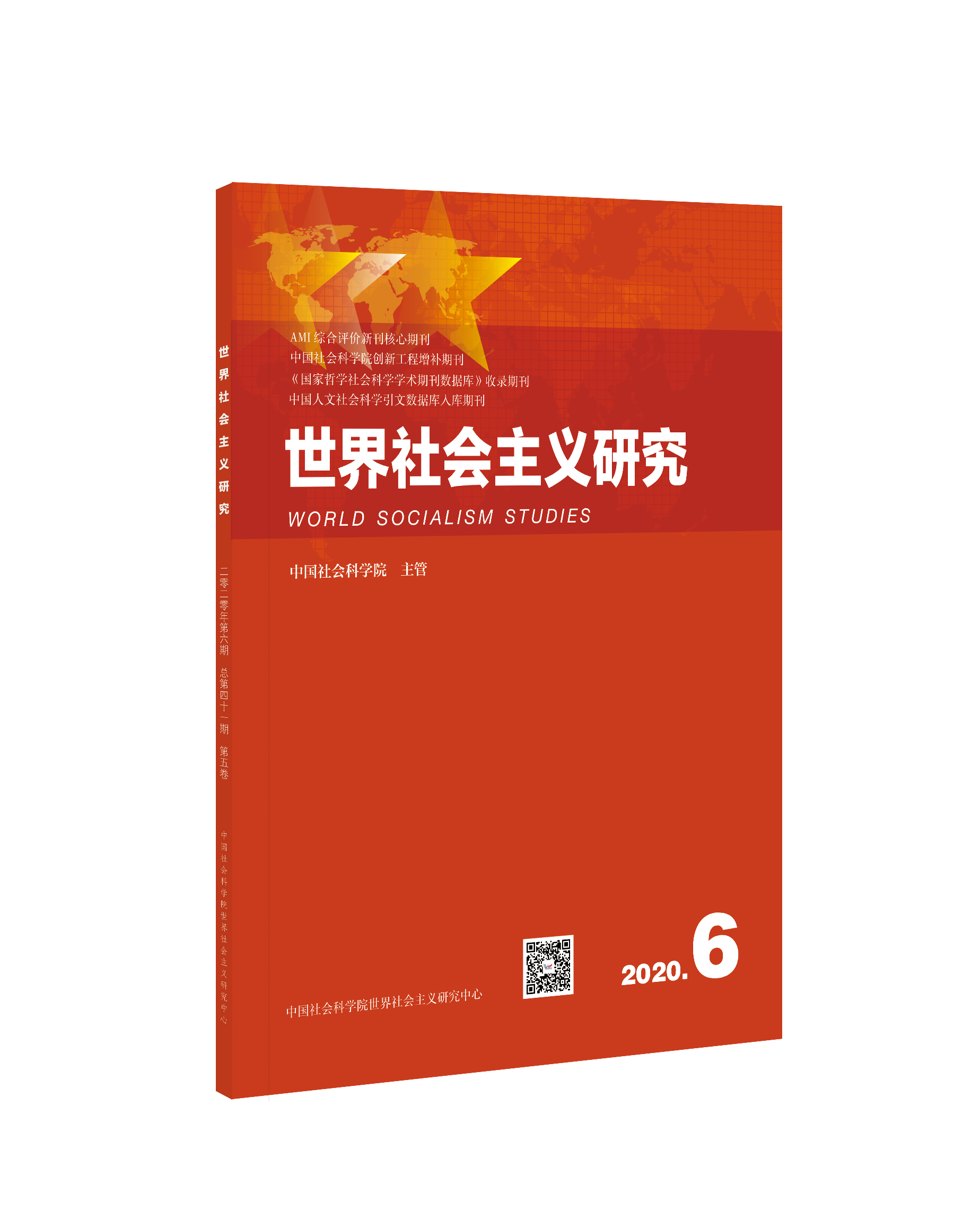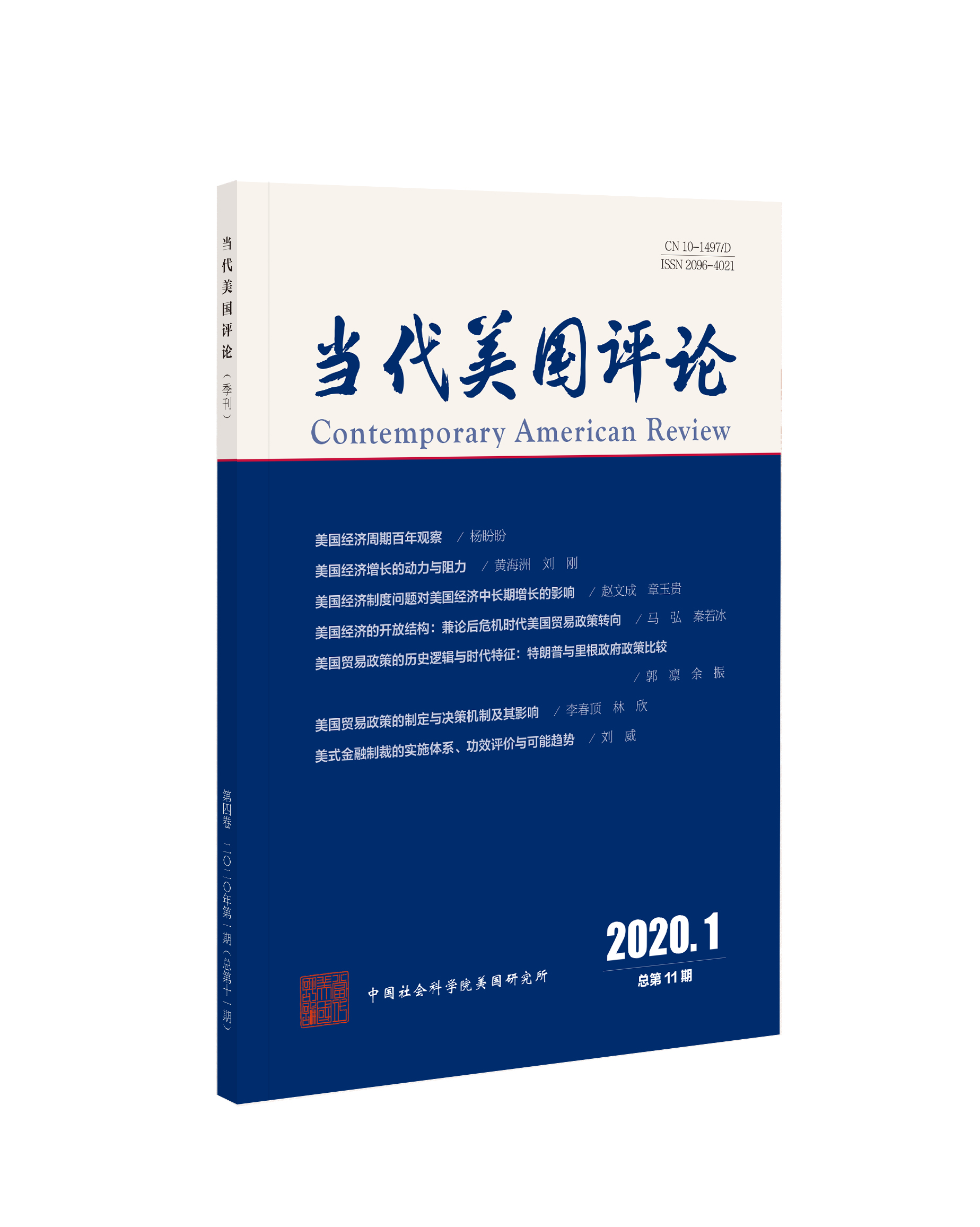最新期刊
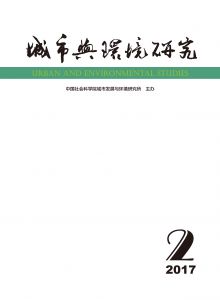
目录
过往期刊
参考文献
-
编委会
-
·学术论文·
-
京津冀协同发展的回顾与展望
-
京津冀协同治理研究:模式选择、治理架构、治理机制和社会参与
-
新型城镇化背景下农村生态治理的对策研究
-
四维生态文明建设评价指标体系构建与案例研究
-
发展中国家气候融资的困境与突破
-
-
·学术综述·
-
气候变化问题经济分析方法的研究进展和发展方向
-
-
·会议综述·
-
低碳发展与生态康养旅游名市建设
-
-
第八届能源经济与管理学术年会暨第十一届中国能源资源开发利用战略学术研讨会会议通知
-
投稿须知
-
版权页
按年份浏览:
- 全部
- 2020
- 2019
- 2018
- 2017
- 2016
- 2015
- 2014
[1][1]薄茹(2011):《中心城功能疏解的方向与任务》,《北京观察》第6期,第18~19页。
[2][2]樊杰(2008):《京津冀都市圈区域综合规划研究》,北京:科学出版社。
[3][3]郭力君(2002):《天津与京冀地区协调发展的战略思考》,《经济地理》第6期,第655~660页。
[4][4]高文杰(2002):《冀北环京津区域城乡协调发展构思》,《城市规划汇刊》第6期,第45~50、80页。
[5][5]胡焕庸(1985):《中国八大区的人口增长、经济发展和经济圈规划》,《地理研究》第4期,第1~9页。
[6][6]林恩全(2013):《北京中心城功能疏解方略》,《城市问题》第5期,第36~40页。
[7][7]李国平(2013):《京津冀区域发展报告2012》,北京:中国人民大学出版社。
[8][8]李国平(2014):《京津冀区域发展报告2014》,北京:科学出版社。
[9][9]孙久文、邓慧慧、叶振宇(2008):《京津冀区域经济一体化及其合作途径探讨》,《首都经济贸易大学学报》第2期,第55~60页。
[10][10]吴良镛(2002):《京津冀地区城乡空间发展规划研究》,北京:清华大学出版社。
[11][11]吴良镛(2006):《京津冀地区城乡空间发展规划研究(二期报告)》,北京:清华大学出版社。
[12][12]吴良镛(2013):《京津冀地区城乡空间发展规划研究(三期报告)》,北京:清华大学出版社。
[13][13]徐国弟(1995):《首都经济圈协调发展探讨——关于京津冀九城市群体发展的战略定位构想》,《北京规划建设》第2期,第17~22页。
[14][14]徐国弟、杨洁(1996):《“九五”时期到2010年推进首都经济圈的主要构想》,《中国软科学》第5期,第72~76页。
[15][15]肖金成、刘保奎(2013):《首都经济圈规划与京津冀经济一体化》,《全球化》第3期,第72~81、127页。
[16][16]仲欣(2006):《大面积贫困带环绕京津》,《中国改革报》3月1日。
[17][17]曹海军、霍伟桦(2013):《城市治理理论的范式转换及其对中国的启示》,《中国行政管理》第7期,第94~99页。
[18][18]陈剑峰(2009):《基于共生理论的太湖沿湖生态带建设的思考》,《生态经济》第6期,第190~193页。
[19][19]陈瑞莲、杨爱平(2012):《从区域公共管理到区域治理研究:历史的转型》,《南开学报(哲学社会科学版)》第2期,第48~57页。
[20][20]范永茂、王树光、马泽强(2016):《“丝绸之路经济带”核心区建设中的公共服务与管理问题》,《新疆大学学报(哲学·人文社会科学版)》第2期,第41~47页。
[21][21]冯怡康、马树强、金浩(2014):《国际都市圈建设对京津冀协同发展的启示》,《天津师范大学学报(社会科学版)》第6期,第7~12页。
[22][22]胡建新(1999):《京津都市圈跨世纪发展战略构想》,《环渤海经济瞭望》第3期,第28~30页。
[23][23]魏丽华(2016):《城市群理论与实践演进史梳理——兼论京津冀城市群发展研究述评》,《湖北社会科学》第7期,第79~86页。
[24][24]吴良镛(2013):《京津冀地区城乡空间发展规划研究三期报告》,北京:清华大学出版社。
[25][25]张衔春、赵勇健、单卓然等(2015):《比较视野下的大都市区治理:概念辨析、理论演进与研究进展》,《经济地理》第7期,第6~13页。
[26][26]张晓兰、朱秋(2013):《东京都市圈演化与发展机制研究》,《现代日本经济》第2期,第66~72页。
[27][27]Andrew,S. A. and R. C. Feiock (2010),“Core-Peripheral Structure and Regional Governance:Implication of Paul Krugman’s New Geography for Public Administration”,Public Administration Review ,70(3),pp.494-499.
[28][28]Douglas,A. E.(1994),Symbiotic Interactions ,Oxford:Oxford University Press.
[29][29]Wallis,A. D.(1994),“the Third Wave:Current Trends in Regional Governance”,National Civic Review ,83(3),pp.290-310.
[30][30]陈肖飞、姚士谋、张落成(2016):《新型城镇化背景下中国城乡统筹的理论与实践问题》,《地理科学》第2期,第188~195页。
[31][31]黄震方、陆林、苏勤等(2015):《新型城镇化背景下的乡村旅游发展——理论反思与困境突破》,《地理研究》第8期,第1409~1421页。
[32][32]李咏梅(2015):《农村生态环境治理中的公众参与度探析》,《农村经济》第12期,第94~99页。
[33][33]刘沛林(2015):《新型城镇化建设中“留住乡愁”的理论与实践探索》,《地理研究》第7期,第1205~1212页。
[34][34]刘召、羊许益(2011):《农村生态环境危机及其治理——基于公共物品理论的视角》,《农村经济》第3期,第104~108页。
[35][35]陆大道、陈明星(2015):《关于“国家新型城镇化规划(2014~2020)”编制大背景的几点认识》,《地理学报》第2期,第179~185页。
[36][36]吕军、尹伟锋、侯俊东(2012):《两型社会建设试点区农村生态环境变迁规律研究》,《中国人口·资源与环境》第10期,第55~62页。
[37][37]彭冲、陈乐一、韩峰(2014):《新型城镇化与土地集约利用的时空演变及关系》,《地理研究》第11期,第2005~2020页。
[38][38]彭小霞(2016):《我国农村生态环境治理的社区参与机制探析》,《理论月刊》第11期,第170~176页。
[39][39]孙若梅(2016):《农业面源污染的现状及对策》,魏后凯、潘晨光编(2016):《中国农村发展报告2016》,北京:中国社会科学出版社,2016年7月,第349~379页。
[40][40]温晓明(2015):《新型城镇化进程中农村生态环境保护的有效路径——以龙岩市为例》,《经济研究导刊》第20期,第135~139页。
[41][41]夏方舟、严金明(2016):《新常态时期中国土地整治转型发展方向探索》,《宁夏社会科学》第3期,第109~113页。
[42][42]晓荣(2016):《生态文明视阈下的农村生态环境治理路径探析》,《农业经济》第10期,第54~55页。
[43][43]姚士谋、张平宇、余成等(2014):《中国新型城镇化理论与实践问题》,《地理科学》第6期,第641~647页。
[44][44]于法稳、李萍(2014):《美丽乡村建设中存在的问题及建议》,《江西社会科学》第9期,第222~227页。
[45][45]中国金融40人论坛课题组(2013):《加快推进新型城镇化:对若干重大体制改革问题的认识与政策建议》,《中国社会科学》第7期,第59~76、205~206页。
[46][46]周伟奇、王坤、虞文娟等(2017):《城市与区域生态关联研究进展》,《生态学报》第15期,第1~8页。
[47][47]白杨、黄宇弛、王敏等(2011):《我国生态文明建设及其评估体系研究进展》,《生态学报》第20期,第6295~6304页。
[48][48]诸大建(2015):《解读生态文明下的中国绿色经济》,《环境保护科学》第5期,第16~21页。
[49][49]谷树忠、胡咏君、周洪(2013):《生态文明建设的科学内涵与基本路径》,《资源科学》第1期,第2~13页。
[50][50]黄勤、曾元、江琴(2015):《中国推进生态文明建设的研究进展》,《中国人口·资源与环境》第2期,第111~120页。
[51][51]李茜、胡昊、李名升等(2015):《中国生态文明综合评价及环境、经济与社会协调发展研究》,《资源科学》第7期,第1444~1454页。
[52][52]李天星(2013):《国内外可持续发展指标体系研究进展》,《生态环境学报》第6期,第1085~1092页。
[53][53]彭向刚、向俊杰(2015):《中国三种生态文明建设模式的反思与超越》,《中国人口·资源与环境》第3期,第12~18页。
[54][54]连玉明(2014):《中国生态文明发展报告》,北京:当代中国出版社。
[55][55]王会、王奇、詹贤达(2012):《基于文明生态化的生态文明评价指标体系研究》,《中国地质大学学报(社会科学版)》第3期,第27~31、138~139页。
[56][56]徐倩、齐蕾(2015):《“五位一体”视角下生态文明城市评价指标体系研究——基于青岛市的实证分析》,《青岛科技大学学报(社会科学版)》第1期,第19~22、30页。
[57][57]严耕、林震、杨志华(2010):《中国省域生态文明建设评价报告(ECI 2010)》,北京:社会科学文献出版社。
[58][58]张欢、成金华、冯银等(2015):《特大型城市生态文明建设评价指标体系及应用研究——以武汉市为例》,《生态学报》第2期,第547~556页。
[59][59]张景奇、孙萍、徐建(2014):《我国城市生态文明建设研究述评》,《经济地理》第8期,第137~142、185页。
[60][60]柴麒敏、傅莎、徐华清、马爱民(2017):《特朗普政府宣布退出〈巴黎协定〉的分析及对策建议》,《中国发展观察》第12期,第5~10、55页。
[61][61]谌园庭(2015):《全球气候治理中的中拉合作——基于南南合作的视角》,《拉丁美洲研究》第6期,第56~61、80页。
[62][62]冯峰(2016):《全球气候治理中的墨西哥:角色转型与政策选择》,《拉丁美洲研究》第2期,第67~78、156页。
[63][63]韩钰、吴静、王铮(2014):《发展中国家气候融资发展现状及区域差异研究》,《世界地理研究》第2期,第14~25页。
[64][64]贺双荣(2013):《巴西气候变化政策的演变及其影响因素》,《拉丁美洲研究》第6期,第26~32、80页。
[65][65]彭茜(2015):《为南南气候合作注入新动力》,新华网,http://news.xinhuanet.com/world/2015-12/10/c_1117422548.htm[2016-12-10]。
[66][66]张士铨(2016):《国家经济利益与全球公共物品》,北京:知识产权出版社,第113~120页。
[67][67]赵重阳(2016):《全球应对气候变化进程中的加勒比国家及与中国的合作》,《拉丁美洲研究》第2期,第96~108页。
[68][68]Arrow,K. J. (2007),Global Climate Change:A Challenge to Policy,in The Economists’ Voice:Top Economists Take on Today’s Problems ,Washington,D.C.:Columbia University Press,2nd Edition,pp.129-130.
[69][69]Barnard S.,C. Watson and L. Schalatek(2016),“Climate Finance Regional Briefing:Latin America”,Climate Finance Fundamentals ,https://www.odi.org/sites/odi.org.uk/files/resource-documents/11033.pdf[2017-05-29]。
[70][70]Brittany P. (2017),“Norway Threatens Brazil with Funding Cuts”,E&E News ,https://www.eenews.net/climatewire/stories/1060056786[2017-06-19]。
[71][71]Chris L. (2016),“With Deforestation Increasing in Brazil,Will Norway Ask for Its USMYM 1 Billion REDD Money Back?”,REDD-Monitor ,http://www.redd-monitor.org/2016/12/08/with-deforestation-increasing-in-brazil-will-norway-ask-for-its-us1-billion-redd-money-back/[2017-03-18]。
[72][72]ECLAC (2014),The Economics of Climate Change in Latin America and the Caribbean:Paradoxes and Challenges ,http://repositorio.cepal.org/bitstream/handle/11362/37056/S1420806_en.pdf?sequence=4[2017-03-18]。
[73][73]ECLAC (2015a),Financing for Development in Latin America and the Caribbean:A Strategic Analysis from a Middle-income Country Perspective ,Santiago:Libros y Documentos Institucionales,p.33.
[74][74]ECLAC (2015b),ECLAC Proposes Debt Relief for the English-speaking Caribbean to Invest in the Fight against Climate Change ,http://www.cepal.org/en/pressreleases/eclac-proposes-debt-relief-english-speaking-caribbean-invest-fight-against-climate/[2017-03-18].
[75][75]IMF (2016),“Subdued Demand:Symptoms and Remedies”,World Economic Outlook ,p.207.
[76][76]IPCC (2011),Managing the Risks of Extreme Events and Disasters to Advance Climate Change Adaptation (SREX ),Cambridge:Cambridge University Press,pp.13-20.
[77][77]Lyndal R. (2016),“$90tn Infrastructure Investment Could Combat Climate Change:Report”,Inter Press Service ,http://www.ipsnews.net/2016/10/90tn-infrastructure-investment-could-combat-climate-change-report/[2017-03-18].
[78][78]Mazza F.,J. Falzon and B. Buchner (2016),“Global Climate Finance:An Updated View on 2013&2014 Flows”,Climate Policy Initiative ,http://climatepolicyinitiative.org/wp-content/uploads/2016/10/Global-Climate-Finance-An-Updated-View-on-2013-and-2014-Flows.pdf[2017-03-18].
[79][79]Nakhooda,S.,T.Fransen and T.Kuramochi,et al. (2013),“Mobilising International Climate Finance:Lessons from the Fast-start Finance Period”,ODI,WRI and Institute of Global Environmental Strategies ,http://www.wri.org/publication/mobilising-international-climate-finance/[2017-03-18].
[80][80]Ostrom,E. (2014),“A Polycentric Approach for Coping with Climate Change”,Annals of Economics and Finance ,15 (1),pp.97-134.
[81][81]Schelling,T. C. (1997),“The Cost of Combating Global Warming:Facing the Tradeoffs”,Foreign Affairs ,76(6),pp.8-14.
[82][82]米志付(2015):《气候变化综合评估建模方法及其应用研究》,北京:北京理工大学博士学位论文。
[83][83]王灿、陈吉宁、邹骥(2002):《气候政策研究中的数学模型评述》,《上海环境科学》第7期,第435~439、454~458页。
[84][84]王铮、吴静、刘昌新等(2015):《气候变化经济学集成评估模型》,北京:科学出版社。
[85][85]魏一鸣、米志付、张皓等(2013):《气候变化综合评估模型研究新进展》,《系统工程理论与实践》第8期,第1905~1915页。
[86][86]Acemoglu,D.,P.Aghion and L.Bursztyn,et al.(2012),“The Environment and Directed Technical Change”,American Economic Review ,102(1),pp.131-166.
[87][87]Aghion,P.,A.Dechezleprêtre and D.Hemous,et al.(2016),“Carbon Taxes,Path Dependency and Directed Technical Change:Evidence from the Auto Industry”,Journal of Political Economy ,124(1),pp.1-51.
[88][88]Allen,F. and D.Gale(2000),“Financial Contagion”,Journal of Political Economy ,108(1),pp.1-33.
[89][89]Anthoff,D. and R.S.J.Tol(2013),“The Uncertainty About the Social Cost of Carbon:A Decomposition Analysis Using Fund”,Climate Change ,117(3),pp.515-530.
[90][90]Atkinson,G.,S.Dietz and J.Helgeson,et al.(2009),“Siblings,Not Triplets:Social Preferences for Risk,Inequality and Time in Discounting Climate Change”,Economics Discussion Papers ,2009(14),pp.1-28.
[91][91]Aymanns,C. and J.D.Farmer(2015),“The Dynamics of the Leverage Cycle”,Journal of Economic Dynamics and Control ,50,pp.155-179.
[92][92]Batty,M.(2009),“Urban Modeling”,International Encyclopedia of Human Geography ,2009,pp.51-58.
[93][93]Blanchard,O.J. and L.H.Summers(1987),“Hysteresis in Unemployment”,European Economic Review ,31(1-2),pp.288-295.
[94][94]Bonabeau,E.(2002),“Agent-Based Modeling:Methods and Techniques for Simulating Human Systems”,National Academy of Sciences ,3(10),pp.7280-7287.
[95][95]Brekke,K.A. and O.Johansson-Stenman(2008),“The Behavioural Economics of Climate Change”,Oxford Review of Economic Policy ,24(2),pp.280-297.
[96][96]Brown,D.G. and D.T.Robinson(2006),“Effects of Heterogeneity in Residential Preferences on an Agent-Based Model of Urban Sprawl”,Ecology and Society ,11(1),pp.709-723.
[97][97]Bosetti,V.,C.Carraro and E.Massetti,et al.(2008),“International Energy R&D Spillovers and the Economics of Greenhouse Gas Atmospheric Stabilization”,Energy Economics ,30(6),pp.2912-2929.
[98][98]Bosetti,V.,C.Carraro and E.Massetti,et al.(2009),“Optimal Energy Investment and R&D Strategies to Stabilize Atmospheric Greenhouse Gas Concentrations”,Resource Energy Economics ,31(2),pp.123-137.
[99][99]Burke,M,J.Dykema and D.B.Lobell,et al.(2015),“Incorporating Climate Uncertainty into Estimates of Climate Change Impacts”,Review of Economics and Statistics ,97(2),pp.461-471.
[100][100]Cai,Y.,K.L.Judd and T.S.Lontzek(2012),“DSICE:A Dynamic Stochastic Integrated Model of Climate and Economy”,http://ice.uchicago.edu/2012_presentations/Faculty/Cai/dsice_computation_paper_DiscTime.pdf[2017-05-04].
[101][101]Cai,Y.,K.L.Judd and T.M.Lenton,et al.(2015),“Environmental Tipping Points Significantly Affectthe Cost-Benefit Assessment of Climate Policies”,National Academy of Sciences ,112(15),pp.4606-4611.
[102][102]Cane,M.A.,E.Miguel and M.Burke,et al.(2014),“Temperature and Violence”,Nature Climate Change ,4(4),pp.234-235.
[103][103]Carbon Tracker Initiative(2013),“Unburnable Carbon 2013:Wasted Capital and Stranded Assets”,Report in Collaboration with the Grantham Research Institute on Climate Change and the Environment ,http://carbontracker.live.kiln.it/Unburnable-Carbon-2-Web-Version.pdf[2017-05-04]。
[104][104]Clarke,L.,J.Edmonds and V.Krey,et al.(2009),“International Climate Policy Architectures:Overview of the EMF 22 International Scenarios”,Energy Economics ,31(2),pp.S64-S81.
[105][105]Cooper,R.(1999),Coordination Games:Complementarities and Macroeconomics ,Cambridge:Cambridge University Press.
[106][106]Diamond,P.A.(1982),“Aggregate Demand Management in Search Equilibrium”,Journal of Political Economy ,90(5),pp.881-894.
[107][107]Dietz,S. and N.Stern(2015),“Endogenous Growth,Convexity of Damages and Climate Risk:How Nordhaus’ Framework Supports Deep Cuts in Carbon Emissions?”,Economic Journal ,125(583),pp.574-620.
[108][108]Eboli,F,R.Parrado and R.Roson(2010),“Climate-Change Feedback on Economic Growth:Explorations with A Dynamic General Equilibrium Model”,Environment and Development Economics ,15(5),pp.515-533.
[109][109]Epstein,J.M.(1999),“Agent-based Computational Models and Generative Social Science”,Complexity ,4(5),pp.41-60.
[110][110]Faber,A.,M.Valente and P.Janssen(2010),“Exploring Domestic Micro-Cogeneration in the Netherlands:An Agent Based Demand Model for Technology Diffusion”,Energy Policy ,38(6),pp.2763-2775.
[111][111]Farmer,J.D. and D.Foley(2009),“The Economy Needs Agent-Based Modelling”,Nature ,460(7256),pp.685-686.
[112][112]Farmer,J.D. and F.Lafond(2016),“How Predictable is Technological Progress”,Research Policy ,45(3),pp.647-665.
[113][113]Farmer,J.D. and C.Hepburn(2014),“Less Precision,More Truth:Uncertainty in Climate Economics and Macroprudential Policy”,Paper Prepared for Bank of England Interdisciplinary Workshop on 2 April 2014 on “The Role of Uncertainty in Central Bank Policy ”,http://www.bankofengland.co.uk/research/Documents/pdf/hepburn_0414.pdf[2017-05-04].
[114][114]Frenken,K.,L.Izquierdo and P.Zeppini(2012),“Branching Innovation,Recombinant Innovation,and Endogenous Technological Transitions”,Environmental Innovation and Societal Transitions ,4,pp.25-35.
[115][115]Galí,J.(2009),Monetary Policy,Inflation and the Business Cycle:An Introduction to the New Keynesian Framework ,Princeton:Princeton University Press.
[116][116]Geanakoplos,J.,R.Axtell and J.D.Farmer,et al.(2012),“Getting at Systemic Risk Via an Agent-Based Model of the Housing Market”,American Economic Review ,102(3),pp.53-58.
[117][117]Gerst,M.,P.Wang and M.Borsuk(2013),“Discovering Plausible Energy and Economic Futures Under Global Change Using Multidimensional Scenario Discovery”,Environmental Modelling and Software ,44,pp.76-86.
[118][118]Gillingham,K.,R.G.Newell and W.A.Pizer(2008),“Modeling Endogenous Technological Change for Climate Policy Analysis”,Energy Economics ,30(6),pp.2734-2753.
[119][119]Golosov M.,J.Hassler and P.Krusell,et al.(2014),“Optimal Taxes on Fossil Fuel in General Equilibrium”,Econometrica ,82(1),pp.41-88.
[120][120]Gowdy,J.M.(2008),“Behavioral Economics and Climate Change Policy”,Journal of Economic Behavior & Organization ,68(3),pp.632-644.
[121][121]Grimm,V. and S.F.Railsback(2012),“Designing,Formulatingand Communicating Agent-Based Models”,in Heppenstall,A.J.,A.T.Crooks and L.M.See,et al.(eds.) Agent-based Models of Geographical Systems ,Netherlands:Springer Press,pp.361-377.
[122][122]Groom,B.,C.Hepburn and P.Koundouri,et al.(2005),“Declining Discount Rates:The Long and the Short of It”,Environmental and Resource Economics ,32(4),pp.445-493.
[123][123]Hansen,A.H.(1939),“Economic Progress and Declining Population Growth”,American Economic Review ,29(1),pp.1-15.
[124][124]Harberger,A.C.(1959),“Using the Resources at Hand More Effectively”,American Economic Review ,49(2),pp.134-146.
[125][125]Hassler,J. and P.Krusell(2012),“Economics and Climate Change:Integrated Assessment in a Multi-Region World”,Journal of the European Economic Association ,10(5),pp.974-1000.
[126][126]Heal,G. and A.Millner(2014),“Uncertainty and Decision Making in Climate Change Economics”,Review of Environmental Economics and Policy ,8(1),pp.120-137.
[127][127]Hepburn,C. and N.Stern(2008),“A New Global Deal on Climate Change”,Oxford Review of Economic Policy ,24(2),pp.259-279.
[128][128]Hepburn,C.,P.Koundouri and E.Panopoulou,et al.(2009),“Social Discounting under Uncertainty:A Crosscountry Comparison”,Journal of Environmental Economics and Management ,57(2),pp.140-150.
[129][129]Hoel,M. and L.Karp(2001),“Taxes and Quotas for a Stock Pollutant with Multiplicative Uncertainty”,Journal of Public Economics ,82(1),pp.91-114.
[130][130]Hope,C.,J.Anderson and P.Wenman(1993),“Policy Analysis of the Greenhouse Effect:An Application of the PAGE Model”,Energy Policy ,21(3),pp.327-338.
[131][131]Hope,C.(2013),“Critical Issues for the Calculation of the Social Cost of CO2:Why the Estimates from PAGE09 Are Higher than Those from PAGE 2002”,Climate Change ,117(3),pp.531-543.
[132][132]Hsiang,S.M.,K.C.Meng and M.A.Cane(2011),“Civil Conflicts Are Associated with the Global Climate”,Nature ,476,pp.438-441.
[133][133]IPCC(2001),Climate Change 2001:Working Group III:Mitigation . Cambridge:Cambridge University Press.
[134][134]IPCC(2014),Summary for Policymakers. In:Edenhofer,O.,R.Pichs-Madruga and Y.Sokona,et al.(eds.)Climate Change 2014:Mitigation of Climate Change. Contribution of Working Group III to the Fifth Assessment Report of the Intergovernmental Panel on Climate Change . Cambridge:Cambridge University Press.
[135][135]Kelly,D.L. and C.D.Kolstad(1999),“Bayesian Learning,Growth and Pollution”,Journal of Economic Dynamics and Control ,23(4),pp.491-518.
[136][136]Kelly,D.L.,and C.D.Kolstad(2001),Solving Infinite Horizon Growth Models with an Environment Sector ,Nederland:Kluwer Academic Publishers.
[137][137]Krey V.,O.Masera and G.Blanford,et al.(2014),“Annex II:Metrics & Methodology”,in Edenhofer,O.,R.Pichs-Madruga and E.Sokona,et al.(eds.),Climate Change 2014:Mitigation of Climate Change. Contribution of WorkingGroup III to the Fifth Assessment Report of the Intergovernmental Panel on Climate Change ”,Cambridge:Cambridge University Press.
[138][138]Kolstad,C.,K.Urama and J.Broome,et al(2014),“Social,Economic and Ethical Concepts and Methods”,in Edenhofer,O.,R.Pichs-Madruga and Y.Sokona,et al(eds.),Climate Change 2014:Mitigation of Limate Change. Contribution of Working Group III to the Fifth Assessment Report of the Intergovern-Mental Panel on Climate Change ,Cambridge:Cambridge University Press.
[139][139]Krussel,P. and A.A.Smith(2009),“Macroeconomics and Global Climate Change:Transition for a Many-Region Economy”,http://docplayer.net/34475570-Macroeconomics-and-global-climate-change-transition-for-a-many-region-economy.html[2017-05-10].
[140][140]Kunreuther,H.,S.Gupta and V.Bosetti,et al.(2014),“Integrated Risk and Uncertainty Assessment of Climate Change Response Policies”,in Edenhofer,O.,R.Pichs-Madruga and Y.Sokona,et al.(eds.),Climate Change 2014:Mitigation of Climate Change. Contribution of Working Group iii to the Fifth Assessmentreport of the intergovernmental Panel on Climate Change ,Cambridge:Cambridge University Press.
[141][141]Law,A.M.(2009),“How to Build Valid and Credible Simulation Models”,Proceedings of the 2009 Winter Simulation conference (WSC ),pp.24-33,http://www.informs-sim.org/wsc09papers/003.pdf[2017-05-05].
[142][142]Lemoine,D. and C.Traeger(2014),“Watch Your Step:Optimal Policy In a Tipping Climate”,American Economic Journal Economic Policy ,6(1),pp.137-166.
[143][143]Lim,M.,R.Metzler and Y.Bar-Yam(2007),“Global Pattern Formation and Ethnic/Cultural Violence”,Science ,317(5844),pp.1540-1544.
[144][144]Lobell,D.B.,M.J.Roberts and W.Schlenker,et al.(2014),“Greater Sensitivity to Drought Accompanies Maize Yield Increase in the US Midwest”,Science ,344(6183),pp.516-519.
[145][145]Lontzek,T.S.,Y.Cai and K.L.Judd,et al.(2015),“Stochastic Integrated Assessment of Climate Tipping Points Indicates the Need for Strict Climate Policy”,Nature Climate Change ,5(5),pp.441-444.
[146][146]Luderer,G.,R.C.Pietzcker and C.Bertram,et al.(2013),“Economic Mitigation Challenges:How Further Delay Closes the Door for Achieving Climate Targets”,Environmental Research Letters ,8(3),pp.1345-1346.
[147][147]Macal,C.M. and M.J.North(2010),“Tutorial on Agent-Based Modelling and Simulation”,Journal of Simulation ,4(3),pp.151-162.
[148][148]Maréchal,K.(2007),“The Economics of Climate Change and the Change of Climate in Economics”,Energy Policy ,35(10),pp.5181-5194.
[149][149]Manne,A.,R.Mendelsohn and R.Richels(1995),“MERGE:A Model for Evaluating Regional and Global Effects of GHG Reduction Policies”,Energy Policy ,23(1),pp.17-34.
[150][150]Martin,I.W.R. and R.S.Pindyck(2014),“Averting Catastrophes:The Strange Economics of Scylla and Charybdis”,National Bureau of Economic Research (NBER ) Working Paper 20215,http://web.mit.edu/rpindyck/www/Papers/AvoidCatastrophesMay2014.pdf[2017-05-05].
[151][151]Messner,S. and M.Strubegger(1995),“User’s Guide for MESSAGE III”,http://pure.iiasa.ac.at/4527/1/WP-95-069.pdf[2017-05-05].
[152][152]Metcal,F.G.E. and J.Stock(2015),“The Role of Integrated Assessment Models in Climate Policy:A User’s Guide and Assessment”,http://scholar.harvard.edu/stock/publications/role-integrated-assessmentmodels-climate-policy-users-guide-and-assessment[2017-05-05].
[153][153]Miller,J.H. and S.E.Page(2007),Complex Adaptive Systems:An Introduction to Computational Models of Social Life ,New Jersey:Princeton University Press.
[154][154]Moss,S.,C.Pahl-Wostl and T.Downing(2001),“Agent-Based Integrated Assessment Modelling:The Example of Climate Change”,Integrated Assessment ,2(1),pp.17-30.
[155][155]Nordhaus,W.D.(1975),“Can We Control Carbon Dioxide”,http://pure.iiasa.ac.at/365/1/WP-75-063.pdf[2017-05-05].
[156][156]Nordhaus,W.D.(1977),“Economic Growth and Climate:The Carbon Dioxide Problem”,American Economic Review ,67(1),pp.341-346.
[157][157]Nordhaus,W.D.(1992),“An Optimal Transition Path for Controlling Greenhouse Gases”,Science ,258,pp.131-519.
[158][158]Nordhaus,W.D.(1994),Managing the Global Commons:The Economics of Climate Change ,Cambridge:MIT Press.
[159][159]Nordhaus,W.D.(2007),“A Review of the Stern Review on the Economics of Climate Change”,Journal of Economic Literature ,45(3),pp.686-702.
[160][160]Nordhaus,W.D. and Z.Yang(1996),“A Regional Dynamic General-Equilibrium Model of Alternative Climate-Change Strategies”,American Economic Review ,86(4),pp.741-765.
[161][161]Nordhaus,W. and P.Sztorc(2013),“DICE2013R:Introduction and User’s Manual”,http://www.econ.yale.edu/~nordhaus/homepage/documents/DICE_Manual_103113r2.pdf[2017-05-05].
[162][162]Paltsev,S.,J.M.Reilly and H.D.Jacoby,et al.(2005),“MIT Joint Program on the Science and Policy of Global Change(EPPA) Model:Version 4”,Policy Analysis Report No .125,pp.78,http://web.mit.edu/globalchange/www/MITJPSPGC_Rpt125.pdf[2017-05-05].
[163][163]Peck,S.C. and T.J.Teisberg(1992),“CETA:A Model for Carbon Emissions Trajectory Assessment”,Energy Journal ,13(1),pp.55-77.
[164][164]Pindyck,R.S.(2013),“Climate Change Policy:What Do the Models Tell Us?”,Journal of Economic Literature ,51(3),pp.860-872.
[165][165]Pindyck,R.S.(2015),“The Use and Misuse of Models for Climate Policy”,http://web.mit.edu/rpindyck/www/Papers/PindyckClimateModels2015.pdf[2017-05-05].
[166][166]Popp,D.(2004),“Entice:Endogenous Technological Change in the DICE Model of Global Warming”,Journal of Environmental Economics and Management ,48(1),pp.742-768.
[167][167]Powell,W.(2007),Approximate Dynamic Programming:Solving the Curses of dimensionality ,New York:Wiley Press.
[168][168]Richiardi,M.,R.Leombruni and N.Saam,et al.(2006),“A Common Protocol for Agent-Based Social Simulation”,Journal of Artificial Societies and Social Simulation ,9(1),pp.15-37.
[169][169]Roe,G.H. and M.B.Baker(2007),“Why Is Climate Sensitivity So Unpredictable”,Science ,318(5850),pp.629-632.
[170][170]Schlenker,W.,W.M.Hanemann and A.C.Fisher(2005),“Will US Agriculture Really Benefit from Global Warming?Accounting for Irrigation in the Hedonic Approach”,American Economic Review ,95(1),pp.395-406.
[171][171]Schularick,M. and M.A.Taylor(2012),“Credit Booms Gone Bust:Monetary Policy,Leverage Cycles and Financial Crises”,American Economic Review ,102(2),pp.1029-1061.
[172][172]Shafiei,E.,H.Thorkelsson and E.ásgeirsson,et al.(2012),“An Agent-Based Modeling Approach to Predict the Evolution of Market Share of Electric Vehicles:A Case Study from Iceland”,Technological Forecasting and Social Change ,79(9),pp.1638-1653.
[173][173]Smulders,S.,C.D.Maria(2012),“The Cost of Environmental Policy Under Induced Technical Change”,https://www.cesifogroup.de/DocDL/cesifo1_wp3886.pdf[2017-05-10].
[174][174]Stehfest,E.,D.P.V.Vuuren and T.Kram,et al.(2014),“Integrated Assessment of Global Environmental Change with IMAGE 3.0.Model Description and Policy Applications”,http://www.pbl.nl/en/publications/integrated-assessment-of-global-environmental-change-with-IMAGE-3.0[2017-05-05].
[175][175]Stern,N.(2006),“Stern Review:The Economics of Climate Change”,World Economics ,98(2),pp.1-10.
[176][176]Stern,N.(2007),“The Economics of Climate Change-the Stern Review:Summary of Conclusions”,South African Journal of Economics ,75(2),pp.369-372.
[177][177]Stern,N.(2013),“The Structure of Economic Modeling of the Potential Impacts of Climate Change:Grafting Gross Underestimation of Risk onto Already Narrow Science Models”,Journal of Economic Literature ,51(3),pp.838-859.
[178][178]Tesfatsion,L.(2002),“Hysteresis in an Evolutionary Labor Market with Adaptive Search”,in Chen,S.H.(eds.),Evolutionary Computation in Economics and Finance ,New York:Physica-Verlag Heidelberg Press.
[179][179]Traeger,C.P.(2014),“A 4-stated DICE:Quantitatively Addressing Uncertainty Effects in Climate Change”,Environmental and Resource Economics ,59(1),pp.1-37.
[180][180]Traeger,C.P.(2015),“Analytic Integrated Assessment and Uncertainty”,http://www.lse.ac.uk/GranthamInstitute/wp-content/uploads/2015/04/Traeger_AnalyticIAM.pdf[2017-05-10].
[181][181]Tol,R.S.J.(1997),“On the Optimal Control of Carbon Dioxide Emissions:An Application of Fund”,Environmental Modeling and Assessment ,2(3),pp.151-163.
[182][182]Van,D.M.D.(2010),“The Environmental Impact and Sustainability Applied General Equilibrium(ENVISAGE) Model”,http://siteresources.worldbank.org/INTPROSPECTS/Resources/334934-1314986341738/Env7_1Jan10b.pdf[2017-05-10].
[183][183]Waisman,H.,C.Guivarch and Grazi,et al.(2012),“The Imaclim-R Model:Infrastructures,Technical Inertia and the Costs of Low Carbon Futures under Imperfect Foresight”,Climatic Change ,114(1),pp.101-120.
[184][184]Weidlich,A. and D.Veit(2008),“A Critical Survey of Agent-Based Wholesale Electricity Market Models”,Energy Economics ,30(4),pp.1728-1759.
[185][185]Weitzman,M.L.(1974),“Prices Versus Quantities”,Review of Economic Studies ,41(4),pp.477-491.
[186][186]Weitzman,M.L.(1998),“Why the Far-Distant Future Should Be Discounted at Its Lowest Possible Rate”,Journal of Environmental Economics and Management ,36(3),pp.201-208.
[187][187]Weitzman,M.L.(2001),“Gamma Discounting”,American Economic Review ,91(1),pp.261-271.
[188][188]Weitzman,M.L.(2009),“On Modeling and Interpreting the Economics of Catastrophic Climate Change”,Review of Economics and Statistics ,91(1),pp.1-19.
[189][189]Weitzman,M.L.(2011),“Fat-Tailed Uncertainty in the Economics of Climate Change”,Review of Environmental Economics and Policy ,5(2),pp.275-292.
[190][190]Weitzman,M.L.(2013),“Tail-Hedge Discounting and the Social Cost of Carbon”,Journal of Economic Literature ,51(3),pp.873-882.
[191][191]Weyant,J.P.(2009),“A Perspective on Integrated Assessment:An Editorial Comment”,Climatic Change ,95(3-4),pp.317-323.
[192][192]Wolf,S.,S.Fürst and A.Mandel,et al.(2013),“A Multi-Agent Model of Several Economic Regions”,Environmental Modelling and Software ,44(44),pp.25-43.
[193][193]Zhang,B.,Y.Zhang and J.Bi(2011),“An Adaptive Agent-Based Modeling Approach for Analyzing the Influence of Transaction Costs on Emissions Trading Markets”,Environmental Modelling and Software ,26(4),pp.482-491.
[194][194]Yang,Z.,Y.M.Wei and Z.Mi(2016),“Integrated Assessment Models(IAMs) for Climate Change”,http://www.oxfordbibliographies.com/view/document/ obo-9780199363445/obo-9780199363445-0043.xml[2017-05-10].
[展开]
相关推荐
手机可扫码阅读


